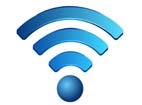After a couple of days in the office following the holidays, this was the week that people really got down to beginning their 2014 schedules. The first item of business, as in other years, is CES. Here is some news and commentary from Las Vegas and elsewhere:
Device Sales Up Across the Board
Gartner projects a good year ahead for devices – all of them, it seems. Indeed, the firm says that shipments will reach 2.48 billion units worldwide, a 7.6 percent increase compared to 2013. The other headline number of the latest research is 1.1 billion. That’s the amount of Android operating systems that will ship. It represents a 26 percent year-over-year increase.
The year is shaping up well for all segments, according to the Reuters report on the research. iOS will be in 344 million Apple devices, a 28 percent increase. Even the beleaguered Windows-based PC and notebook segment is getting a boost: 2013’s total of 328 million devices will be beaten by 32 million, the company says.
4K a Winner in Vegas
4K television, also known as Ultra HD, was one of the hits at the CES show. This is an important issue because healthy adoption of Ultra HD will means equally widespread deployment of High Efficiency Video Coding (HEVC), which is the successor to MPEG-4 and more or less a requisite network upgrade. Due to its higher compression capabilities, HEVC will increase broadband capacity across the board.
Light Reading reports on the news:
In a flurry of moves at the CES show in Las Vegas this week, Comcast Corp.(Nasdaq: CMCSA, CMCSK), DirecTV Group Inc. (NYSE: DTV), Netflix Inc.(Nasdaq: NFLX), and Amazon.com Inc. (Nasdaq: AMZN) all announced deals with Samsung Electronics Co. Ltd. (Korea: SEC) to deliver UltraHD video programming to Samsung’s new line of 4K TV sets later this year. In addition, Samsung will team up with M-Go, a joint venture of Technicolor SA (Euronext Paris: TCH; NYSE: TCH) and DreamWorks LLC that streams movies and TV shows, to deliver 4K programming as well.
The commentary in Alan Breznick’s story is that the moves by and large were not surprising. The speed at which they are happening, however, along with Ultra HD events, such as the Winter Olympics in Sochi, make it likely that the new platform will quickly become mainstream.
Verizon Ups the Game
The war between cable and telephone companies has been raging for years. It never slows down; it simply moves to new fronts.
Verizon introduced its fiber-based FiOS service in 2005 as a way to cut into cable’s empire, which is based on coaxial cable. The industries were off to the races. Most recently, cable operators introduced version 3.1 of the Data Over Cable Service Interface Specification (DOCSIS), which will offer expanded capacity in both the downstream and upstream directions. It will be tested and trialed this year.
Investors.com reports that Verizon is upping the stakes yet again. It says that the telco’s Quantum increases speeds from FiOS’s 15 Megabits per second (Mbps) to 50 Mbps to 500 Mbps. The significant but subtle initiative is to make Quantum a standard element of Verizon’s triple play (phone, video and broadband) service.
Resonant Reasoning
The idea of wireless charging of mobile devices has a lot going for it: It will relieve users of the need to tote around wired chargers when away from home, unclutter countless desk draws and bureaus and, perhaps best of all, reduce waste and aid the environment. Despite all those good points, wireless charging hasn’t taken off.
Existing systems rely on a technique called inductive technology. ConvenientPower, MediaTek, PowerbyProxi and WiTricity are using a different approach. Network World says that resonant wireless power transfer is similar to the older method, but enables simultaneous charging of different size devices. The devices being charged can be farther away and more imprecisely placed as well, the story says.
CES Fun
And, finally, comes a story about weirdness. Or what passed for weirdness at CES. Many sites and publications run pieces that point to the strangest, most innovative or in other ways most extreme products found at the vast show.
The Daily Telegraph’s list of odd introductions is interesting. Yellow Jacket offered an iPhone stun gun; Kolibree introduced an electric toothbrush that analyzes the user’s technique; Typo is an iPhone case that doubles as a QWERTY keyboard; and Intel took the wraps off “Edison,” a powerful computer that can be sewn into clothing. Check out the story for the other strange and extremely innovative new products.



